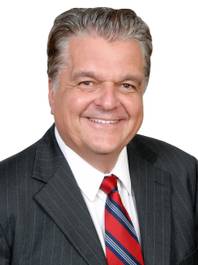Saturday, Jan. 23, 2010 | 2 a.m.
Sun Archives
- Mayor angry, Reid disappointed Las Vegas denied more federal aid for foreclosures(10-14-2010)
- Nevada records nation’s highest foreclosure rate in 2009 (1-13-2010)
- Cities, county find buying valley homes isn’t easy (7-7-2009)
- Federal funds meant to ease valley’s foreclosure problems (7-7-2009)
- HUD providing $18.5 million to help purchase foreclosed homes (3-30-2009)
- North Las Vegas eyes foreclosure solution (11-14-2008)
- State plan could ease pressure of ‘tsunami’ (10-23-2008)
Sun Topics

Steve Sisolak

Lawrence Weekly

Rory Reid
The Housing and Urban Development Department awarded $2 billion in federal stimulus money last week to help communities deal with foreclosures. Despite its soaring foreclosure rate, Southern Nevada came up empty-handed.
Champing at the bit to blast someone for losing out on the needed dollars, Clark County commissioners leveled thinly veiled threats this week at Mike Pawlak, director of the county’s Community Resources Management Division, who is in charge of applying for the money.
“All seven of us are frustrated that we’re not getting any money,” Commissioner Steve Sisolak said during Tuesday’s commission meeting.
Lawrence Weekly took direct aim at Pawlak: “We took anything that Mike Pawlak dealt to us.”
“What you hear is the sound of a lot of people looking for somebody to blame,” Commission Chairman Rory Reid said. But assigning blame is “not always productive.”
Pawlak, whose job on the best of days puts him in the uncomfortable position of deciding how to spread federal money among commissioners’ pet projects, listened quietly.
So who, if anyone, is to blame for Southern Nevada getting no “neighborhood stabilization” money? Was there a problem with the application, or did federal officials merely see greater need elsewhere? Did delays in spending much of the $30 million in neighborhood stabilization money that Clark County received last year cause federal officials to skip sending more? And couldn’t Senate Majority Leader Harry Reid have somehow greased the wheels for his home state?
HUD officials have yet to explain their decisions. Questions were referred to HUD spokeswoman Andrea Mead in Washington; she called the process “very competitive.”
Less than 12 percent of the 482 entities that applied received federal money. Of those that did get funding, only two were Western counties — Pima County, Ariz., and Alameda County, Calif.
“To be perfectly honest, there’s a lot of need in the country,” Mead said. “The situation is very bleak and there’s a limited amount of funding in the program.”
Reading into HUD’s snub
Southern Nevada’s municipalities pursued the money as a group or “consortium” of Clark County, Las Vegas, North Las Vegas and Henderson. HUD encouraged such groups.
Officials from the four governments had about six weeks to hash out each entity’s internal politics and assemble the 75-page application. In it they requested $367 million — enough to purchase about 4,000 foreclosed homes, fix them up, rent or sell them and provide down-payment assistance to homebuyers. Of that total, Clark County requested $100 million, Las Vegas $103 million, North Las Vegas $120 million and Henderson $44 million. (Had they received any HUD money, it would have been allocated over three years.)
Before submitting the application, the consortium ran it past HUD officials in the local office and came away feeling it was on the right track.
“They didn’t tell us that we needed to do a rewrite,” Pawlak said.
For this story, representatives of the other local governments deferred to Pawlak to comment.
Pawlak said he hasn’t yet been debriefed by HUD officials but based on his knowledge of the process, he thinks some speculation on why Southern Nevada failed to get the money can be ruled out.
Unspent neighborhood stabilization money from the previous HUD grant couldn’t have hurt Southern Nevada’s application, he said. That was a point of contention with county commissioners Tuesday, who wondered why the county had not yet spent much of the $30 million in neighborhood stabilization money it received last year. (Total funding for local jurisdictions in Clark County was $60 million.) Pawlak said $8.3 million has been spent or committed by the seven outside agencies contracted to use the money to fund specific neighborhood stabilization programs. Las Vegas has spent a little more than $4 million of the $20.6 million it received.
All of the money has to be committed within 18 months and spent within four years.
HUD told municipalities that the first round would have nothing to do with the second. Further, there was virtually no opportunity for HUD to examine how any municipality had used its first-round money, Pawlak said, so it would be almost impossible for it to use that as an argument against giving more.
Some observers have also questioned the size of the request, saying $367 million might have been too large because HUD was only offering $2 billion nationwide. In fact, HUD reserved the right to play with the numbers and could have lowered the $367 million if the consortium had been selected.
As far as Sen. Reid being able to put a finger on the scale for his home state, Mead said HUD’s system for scoring and ranking applications “did not allow politics” to play any part in who got money.
“There’s no political consideration,” she said. “Harry Reid had nothing to do with whether this application was funded or not funded.”
Sisolak said that after learning more about the process, he had stopped looking for someone to blame.
“Sen. Reid doesn’t control it, and it’s unfair for people to blame him or to blame Mike Pawlak for not getting this money,” he said Friday.
Other places worse off
The most likely explanation for why Southern Nevada didn’t get the money won’t be satisfying to Las Vegans or commissioners: Many places are worse off and have been for decades.
Need is great in Southern Nevada right now but, as Mead noted, need in the United States is pretty universal during this recession. And it’s probably worse in places that haven’t had the decades of economic growth that Clark County has.
Pawlak thinks its high foreclosure rate gave Southern Nevada a high score in the area of “need.” But that was one of six factors HUD officials examined.
“I think people forget Detroit and Cleveland or other parts of large urban metro areas that have seen decades of poverty and disinvestment and blight,” Pawlak said.
Those parts of the country have long been in the business of redeveloping and rehabbing blighted neighborhoods. That could have given them an edge over Southern Nevada because part of HUD’s scoring focused on whether a community had “capacity” to do the kind of redevelopment the money was set aside for.
Sure, Southern Nevada has patches of blight. But redevelopment here has largely been relegated to commercial areas. In fact, county commissioners voted to mothball its redevelopment agency last summer.
Commissioner Chris Giunchigliani, who was one of the calmer voices during Tuesday’s meeting, said the focus should be on what can be done to improve the region’s chances at landing future grants.
“People need to chill before we start making all these accusations,” she said. “We didn’t get this money, so we get ready for the next round. We move forward.”
Indeed, HUD appears to be gearing for a third round of neighborhood stabilization funding.
In September, HUD selected staff to provide technical assistance with grant applications. In December, months after Southern Nevada’s Round 2 applications had been submitted, staff began offering that help.

Join the Discussion:
Check this out for a full explanation of our conversion to the LiveFyre commenting system and instructions on how to sign up for an account.
Full comments policy